Posts by Alyson Shane
What is a Content Strategy (and Why Do You Need One?)
- by Alyson Shane
Before the internet was as embedded in our everyday lives as it is now, marketing took a very "one size fits all" approach compared to today's standards. Billboards, print ads, and commercials were certainly still created with specific audiences in mind and placed accordingly (eg: ads for lipstick in Cosmopolitan magazines), but they didn't provide a lot of information to the consumer.
In today's digital age, marketers have to do a whole lot more in order to stand out from the crowd, and these days consumers take their time to research, cross-reference, and familiarize themselves with a brand and its products or services. Putting white space on a page to stand out from the crowd just won't cut it anymore.

What's risen up to replace traditional marketing is content marketing. Content marketing differentiates itself from the traditional variety by supplementing promotional content (ads) with useful, informational, and entertaining content (blog posts, memes, lists, etc).
Content marketing helps businesses build familiarity with their target audiences, and by sharing information that doesn't directly relate to themselves over time (and with some luck) a trusting relationship will turn that audience member into a customer.
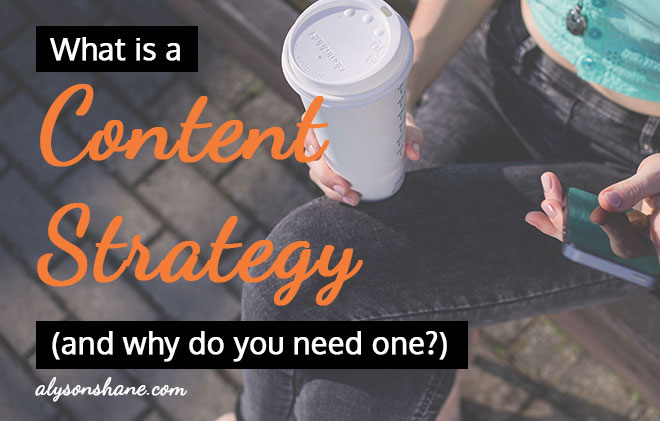
Content marketing strategies are essential for any sort of meaningful long-term success online. They help determine how, why, and who you can reach using your content, and act as a "game plan" to direct those efforts and measure results.
Without a content marketing strategy you (or your employees) are simply throwing information against the wall and hoping that it sticks. While there is certainly a level of experimentation which can (and should!) happen within the contexts of a long-term content strategy, your day-to-day actions should be determined by a set of values and goals set by your content strategy.
What should you include in your content marketing strategy?
It's all well and good for me to say "you need this" but I'm not doing my job very well if I can't break down exactly what you need, right? Below are some of the essentials that I include in every content marketing strategy (and you should, too):
Goals & objectives
The first thing you need to determine is what is your content marketing strategy meant to achieve. Some common examples include:
- Increasing website traffic
- Growing social media profiles (Likes, Followers, etc)
- Increasing newsletter signups
- Downloads of a specific product, PDF, etc
Who your target audience is
The first thing to do here is create a buyer profile which will help you understand what motivates your customers, and what their "pain points" are that your product or service can help them solve. You can read more about creating effective buyer profiles here.
Touch points
Modern customers often encounter a business in a variety of places: searching, paid digital advertising, customer reviews, and social media, just to name a few.
Pay attention to customers are finding you (your website analytics and keyword analysis are very helpful here) and define which channels and social networks you will use to help guide your customers, and what your goals for each channel are going to be.
Your messaging
Content marketing should tell your brand's story; that is, what makes your business, service and/or products different, and why your customers should care.
Gone are the days when you can be a faceless monolith and still create real, meaningful connections with your audience.
Some things to keep in mind are:
- What sets you apart from the competition?
- What makes your business unique?
- How can your product/service help your customers?
- What kind of tone will you use (formal or casual)?
The kind of content you want to share
Before you start sharing memes left and right, take a moment to think about how your audience will react to what you're sharing, and how they will work to help you achieve your objectives.
Your buyer profile should really come into play in this area, because while there are lots of blog posts, infographics, videos, and much more available online, if you're sharing it with audience members who don't engage with that kind of content, then you may be doing more than just boring them: you may start alienating them.
Don't worry about limiting yourself (you can share blog posts, news articles, and infographics, for example); it's more about identifying which kinds of content work best together, not focusing on one specific type.
Pick your content topics
Once you've figured out the kinds of content you want to share, use your buyer profiles to figure out how the information contained within those forms of content can help solve your customer's pain points.
For example, if your business sells personal protective equipment for construction workers and labourers (helmets, vests, steel-toe boots, etc), then sharing articles relating to worker safety, staying safe on the job, and updates about your industry are all good content topics to start with.
How to measure success
No content marketing strategy would be complete without determining how you will measure success, and your Goals & Objectives section of your plan should help direct these efforts.
Whether you classify success as a monthly increase in social followers, 500 newsletter subscribers, or 100 downloads of your latest white paper, make sure to track these stats over time to see how well you're doing.
Do you have any questions about content marketing strategies? Did I miss anything in this post? Let me know in the comments or drop me a line.
3 Things You Can Do Right Now to Get Noticed on Twitter
- by Alyson Shane
Without a doubt, the social network that people ask me about the most is Twitter.
Let me preface by saying this: the only reason I'm especially "good" at Twitter is because I've been an active user for a really long time. I first joined in December 2008 (thank you, Twitter) but didn't use it a lot at first. Part of that was that I didn't have a smartphone at the time, but the main reason I avoided it was because I didn't know what the heck to say.
Figuring out what is and isn't appropriate to share on Twitter and then trying to condense it down into 140 characters felt like a daunting and overly-complex experience, and for a long time I just "nope'd" out of it.

Eventually, though, I realized that I was over-thinking things way too much because (like all social networks) the main purpose of Twitter is to share your thoughts and talk to other people. That's it.
The issue that most people have with Twitter is that they over-think it. Too many people I know have asked me "is this okay to tweet?" before, and my response is almost always "yes, don't worry about it so much."
So how can you stop wringing your hands and gnashing your teeth every time you have to send out a tweet? Let's go over three quick things you can do right now:
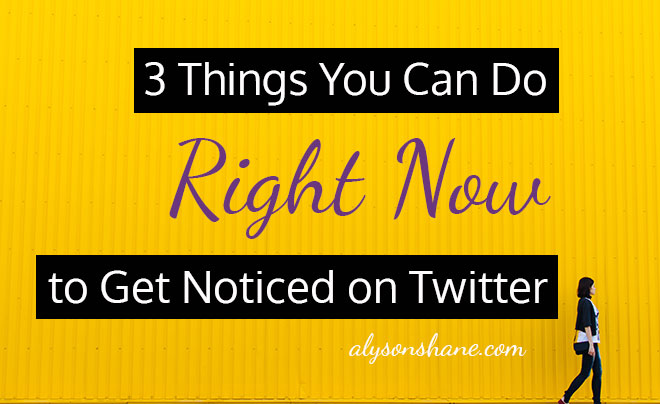
Use strong visual branding
The first thing other Twitter users will see (besides your clever, savvy tweets) is your profile picture. If you can, try to use a hi-quality photo of you that ideally isn't a selfie. As much as I love selfies, they're easy to spot and don't exactly scream "professional internet person."
If you have social media profiles on other networks, try to ensure that your Twitter profile looks similar and fits with the same theme in terms of colours, photos, and descriptive words, as well as including links to your website or blog, if you have one.
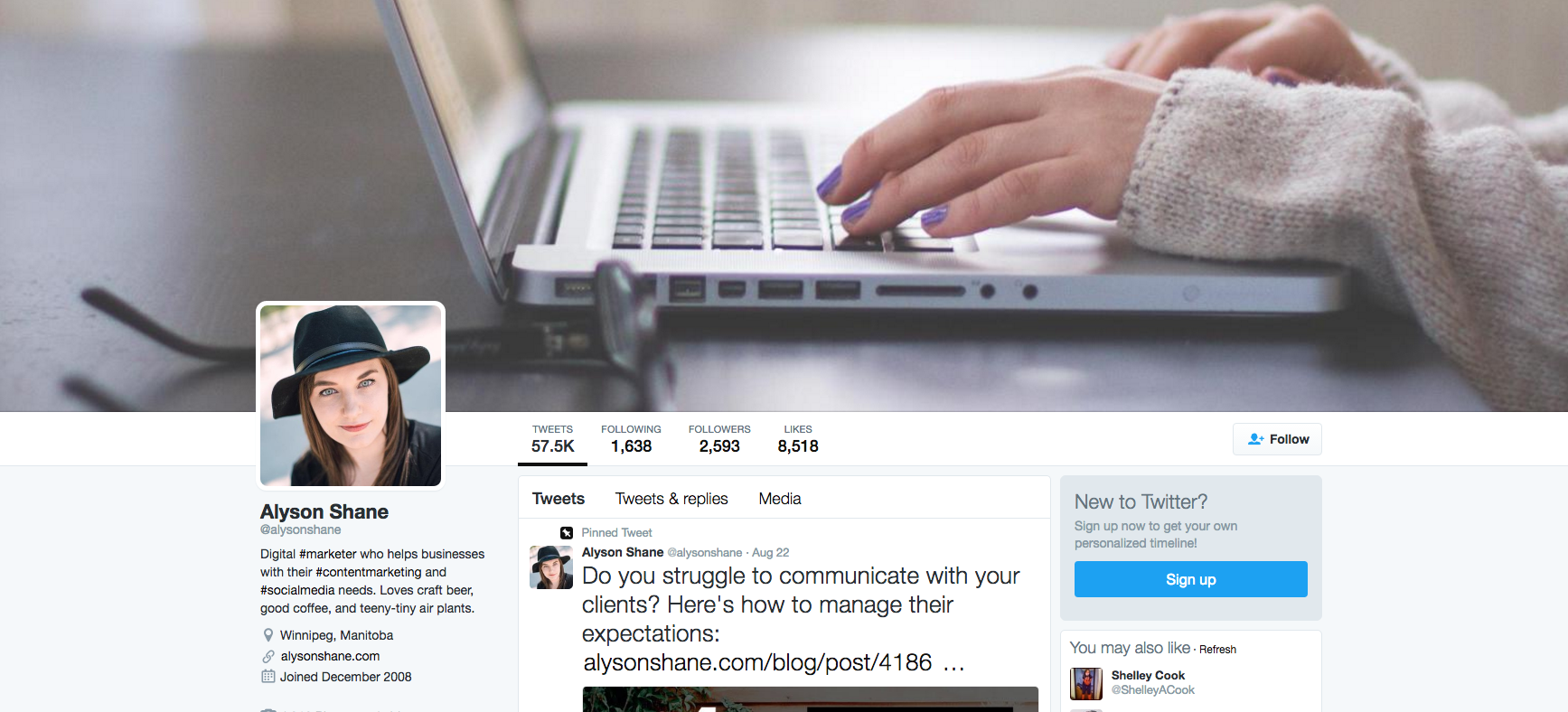
If we take a look at my profile, you can see that I briefly describe what I do for a living, and some stuff I'm into.
This combination of personal and professional works well because other users know what to expect from me in terms of Twitter content, and it's not aggressively sales-y so it doesn't turn off prospective new followers.
Have some variety in your tweets
I have no doubt that you're an interesting, complex, multi-faceted person who loves more than your favourite sports team or binge-watching the X-Files, so why would you limit the stuff you share online to only reflect that one side of your personality?
Because Twitter forces you to be concise it's actually a really great tool for showcasing different interests, thoughts, and opinions. However, it's important to be diverse enough that people don't get bored of your content, and that you're actually engaging with other people.
For example, posting life updates with no context is fine once in a while, but don't crutch on it because most users can't relate to your life, specifically. On the flip side, only sharing memes and gifs doesn't help people get to know you as a person, which is what Twitter is actually for.
Instead, try to post a variety of things from the following topics:
- Random thoughts/life updates
- Links to cool articles and interesting stuff
- Funny gifs and memes
- Stuff relating to your profession (if you're the kind of person who is comfortable talking about their work online)
- Blog posts and other content you've created (if you're a content producer)
- RT's and quoted content
- Tweeting at and replying to other users
Don't abuse hashtags
Hashtags are how users on Twitter (and now other social networks, too) connect their Tweets to a larger shared topic or idea. For example, people tweeting about their long weekend plans will use the hashtag #LongWeekend. That way when people search for hashtags relating to the long weekend, theirs will pop up.
While hashtags are a great way to connect your thoughts to a larger public discussion, they don't look very visually appealing and jamming your tweet with hashtags makes your 140 character message basically impossible to read. If possible, keep hashtags to a minimum and try to use 2-3 at most.
Are you still feeling baffled by Twitter? Then make sure to check out the Twitter for Beginners series, where I break everything down in a handful of easy-to-digest posts for your reading (and future Tweeting!) pleasure.
Do you still have more questions about Twitter and tweeting etiquette? Tell me in the comments!
4 Quick Tips for Managing Client Expectations
- by Alyson Shane
One of the scariest and most challenging things about going from having an office job to running your own business is that you essentially go from having one boss, to having lots of mini-bosses. This means more deadlines, more phone calls and emails, more meetings... you name it, there's more of it. This also means that instead of one boss to keep happy, you now have three, or six, or sixteen, or sixty-six bosses to manage.
I'll be honest with you: if you run a client-facing business then there is a 100% guarantee that you will eventually have to deal with a tricky client situation (if you haven't already.) I can say this confidently because people are fickle and miscommunications happen.
So how can you manage your client's expectations? I'm glad you asked:
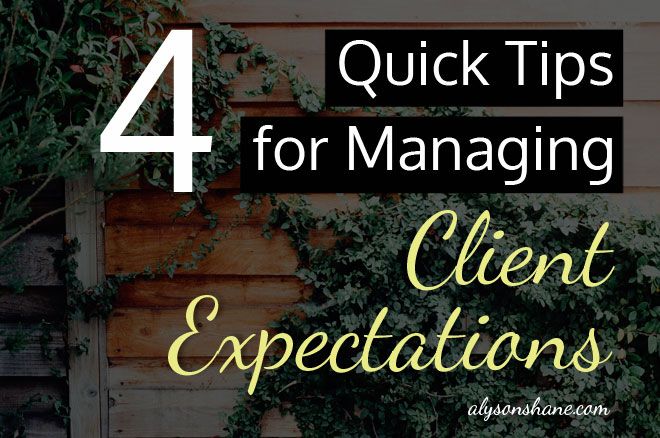
1. Keep your contracts clear
I cannot stress this enough. Don't just blindly sign, or skim over, an agreement between yourself and a new client. Contracts help keep you safe and can be instrumental to resolving disputes, clarifying issues, and other really important stuff.
In my experience I find that it's easiest to provide my clients with a contract for them to review, since I know the deliverable specifics that I need to include. It also means that I get to set the tone moving forward, and it's up to the client to make any revisions to my proposed contract, which is easier for me.
Thoroughly read through each and every client agreement and make sure that it clearly identifies the following:
- Your deliverables (monthly, per-project, or otherwise)
- Client deliverables (eg: are you waiting on information each month to create a newsletter?)
- Deliverable specifics
- Deliverable timelines, if necessary
- Payment schedules (eg: will you be paid monthly, as specific milestones are met, etc)
it's okay to go back and forth on a contract with a client. Remember: this is a negotiation, and it's better to hammer out specifics up-front so that there's no confusion about what your role is, and what you need to do for them so that you're all on the same page.
2. Under-promise and over-deliver
I'm not saying that you shouldn't go above and beyond for your clients, but giving yourself buffer room and quoting longer deadlines than you actually need can be an absolute lifesaver during busy times, or when complications arise with a project you're working on and revisions need to be done.
Not only does buffer room help you stay within a proposed timeline, but if you finish the project earlier than you quoted your clients will be over the moon for you.
3. On-board like a boss
On-boarding is critical to bringing on new clients seamlessly and make them aware of what to expect from you.
One of the things that I do to help manage client expectations is to provide a document that outlines my on-boarding process from start to finish. This document outlines the following:
- What they can expect to discuss at our each meeting/phone call
- What I need from them (eg: fill out the Brand Audit Worksheet)
- What I'll do post-meeting (eg: prepare a quote, send a contract, etc)
- Tasks, broken down by:
- Daily tasks
- Weekly tasks
- Monthly tasks
This is an approximation, as each client I work with is slightly different, but it's general enough that they know what to expect from me.
4. Set boundaries and keep them
Even if you work for yourself, keeping regular office hours is an easy way to manage client expectations. Let them know that you're at your desk from 8am - 4pm Monday - Friday (or whatever works for you) so they don't get upset that you didn't reply at 11pm on a Sunday.
I can't stress this enough: if you don't set boundaries your clients will dictate your life. Having regular office hours works for me, and I've been working towards only checking my email twice a day (it's harder than it sounds!) so that I can focus on doing work for my clients instead of spending all day replying to emails.
If you have a client that loves to get in touch after-hours (and some do) then let them know that you'll do your best to address their concern the next chance you have. This obviously doesn't apply to emergency situations, but day-to-day your clients should understand that you have a life outside of your work and should be understanding if you aren't available right that second.
---
Taking the time to set up a system that your clients can understand, and managing their expectations from the start is the easiest and best way to take care them and ensure that you have a positive, productive professional relationship for years to come.
Do you have any systems in place to keep your clients happy? Tell me in the comments!
How to Create Facebook Ads That Actually Get Results
- by Alyson Shane
Facebook is the world's largest social network with more than 1 billion worldwide users, and it's an important social network for businesses to be able to connect with their audiences and share their content.
However, recent changes to Facebook's "timeline" feature presents a challenging problem: many businesses depend on Facebook to connect with their audiences and Facebook's organic reach has been steadily declining. In fact, the company recently announced that it would be curating users' timelines to show even less content from Pages (the business equivalent of a Profile) than ever before.
Shock! Panic! Is this the end of Facebook for businesses?!
Well... no, not really. All it means is that we have to start changing our tactics to meet the shifting demands of the social network, which means spending more time to reach the same number of people that we once (easily) reached for free.

Is Facebook still worth it?
For businesses with Facebook Pages this news may leave you feeling frustrated; after all, now you'll reach fewer people when you publish new content than you did previously. However, it's important to note that users who regularly engage with your posts by liking, commenting, and sharing (aka your "hardcore fans") will still see your content on their timeline on a regular basis.
While this shift in timeline content may feel discouraging, it's important to note that Facebook's users continue to increase every year, which means that it's still a growing and powerful network that deserves your time and attention.
With this in mind, there are basically two things you can do to increase visibility:
Encourage users to share your content
I recommend this to everyone I work with; getting users to share your content is an easy (and free!) way to reach a wider audience and encourage people to like and engage with your page. Contests, promotions, and timely, informational content are all ripe for sharing, but creating this content takes time and isn't all that reliable, because it's difficult to predict exactly what will resonate and get shared, and what won't.
So while I work this kind of content into every content calendar I manage, I strongly encourage my clients to consider...
Paid Facebook Advertising
Facebook's page advertising platform is incredibly powerful, and one of the reasons that I love it is that you can reach a large targeted audience on a daily basis very easily.
Let's say for example you want to promote your restaurant's newest dinner feature. You can use Facebook's Ad Manager to target people in your city with upcoming birthdays and anniversaries who like steak, wine, locally-sourced food, and earn an average annual household income of between $75,000 - $100,00.
Facebook Ads allow you to target exactly the kinds of users you want to see your ad, meaning you get you a direct connection with the kinds of people you want to be coming into your restaurant.
This is the biggest benefit from Facebook advertising: instead of creating a one-size-fits-all ad and hoping that it works, you can target users who live in a specific area, or who have already expressed interest in similar products or services to the ones you're selling.
While many people may still feel frustrated with online advertising, they'll still stop and click on a link if it interests them enough.
Getting started
Every business is unique, and their audiences are unique and will respond differently to different messaging and images, and part of effectively using Facebook Ads is simply making the investment and experimenting with different ads to see which ones will resonate best with your target audience.
With that in mind, here are a few things to remember as you start wading into the big, wide (or small and targeted) world of Facebook Advertising:
- Do your research. If you don't know how to create a buyer persona for your business then check out this post on the subject, then get to making those ads. Otherwise, you won't have any idea who you should be targeting, and you'll waste valuable dollars figuring it out.
- Be patient. As I said, generating the kind of long-term sales and click-through rates that most businesses are looking for takes time. Some campaigns will perform wonderfully; some may flop completely, but it's staying committed to it and learning as you go that will generate real results.
- Test extensively. There are lots of ways to reach the same groups of people: where they work, where they went to school, what their interests are, which Pages they like, etc. Experiment with targeting different interests and see what happens!
- Change up your images. I rarely run a Facebook Ad campaign with fewer than three photos because I like being able to compare and see which kinds of images did better. Not only does this help me understand which images resonated better with people, but it also helps me know which images not to use the next time around.
One last thing...
It's important to remember that a single Facebook Ad won't produce brilliant results overnight. Like social media, blogging, or any other form of advertising (online or otherwise) these things take time. It's a much better long-term business strategy to allocate a monthly "ad spend" budget, and cycle through and try different kinds of ads to see what works.
However, if you can tap into your audience's needs and interests then Facebook Advertising is one of the most powerful weapons in your marketing arsenal, so why not give it a try? (and if you need a hand, drop me a line - I'm happy to help!)
Do you have any tips for Facebook Advertising? Tell me in the comments!
Reflections on 365+ Days of Business Ownership
- by Alyson Shane
A few weeks ago I passed a significant personal and professional milestone:
June 30th, 2016 was my one-year anniversary as a full-time business owner.
The past 365+ days have been an incredible journey; I've learned a lot, made mistakes, discovered a lot about myself and my life has changed in so many ways that it felt appropriate to share some of the things I've learned this past year with all of you:

It's okay to not be a "good employee"
I'll be honest with you: I used to get depressed when I thought about my career. Even after going to university and working roles that were actually in my field (instead of being an accountant, oh my god) I'd still hadn't found a job that did it for me. I'd think of all those years ahead of me, likely spent in dull offices, trying to find a position or organization that hopefully wouldn't bore me to tears after six months and it was so depressing.
I also had a lot of anxiety around being a "good employee." I didn't like sitting at a desk for a pre-determined amount of hours, asking for permission to take an extended lunch or book an appointment, taking a vacation, or playing office politics (ugh). I'm also not afraid to stand up for myself and point out when I think something unfair or just plain wrong, which doesn't bode well in the world of 9-5's.
So what feels different? The biggest thing is that while I'm beholden to my clients, and I technically have more "bosses" now than I did before, we have a mutually respectful relationship which can be hard to find in the office world.
I'm honest with my clients, and they rely on me to create the right content and steer them in the right direction, which results in a level of respect and collaboration that I was never able to enjoy when I worked for someone else.
Your value isn't just tied up in your qualifications
Before I went to university the advice everyone gave me was "you have to go to university! You'll never be able to get a decent job if you don't go to university!" So that's what I did. I spent three years at the University of Winnipeg earning my Bachelor of Arts, and you know what? Not one of my clients has ever asked me about my formal education.
To be clear: I am in no way saying that getting an education isn't worth it. University was an amazing experience, and I learned a lot, but when it comes to running a service-based business my experience has been that it's more important to be able to demonstrate your value and your skills than it is to have a piece of paper that declares it for you.
Instead, people look at my website, blog, social feeds, and where I've been published or asked to speak to see examples of my knowledge.
You can say no to things that you don't want
One of the most empowering things that I've learned in this past year is to say "no" when something doesn't make me feel good. I don't take on projects that I don't want, and I don't work with clients that I don't like.
This is incredibly hard to do; we're conditioned to believe that every opportunity that comes our way may be the last, and especially when you're new to being a solo business owner it's hard not to think "if I don't take this, will I regret it? Why am I turning down money? Who in their right mind turns down money?!"
Except money isn't the key to happiness. Instead of chasing money, I chase value. I've turned down opportunities that could have resulted in a nice boost to my bank account, but which would have made me miserable, and I don't regret them at all. Instead, I focus my energy on finding opportunities and work that are more suited to my tastes and personality, and it feels amazing.
Irregular income takes some getting used to
Before I started working for myself I would say things like "I could never go from biweekly payments, it's so scary!" and you know what? It is, and it takes some getting used to.
Being paid on a monthly or irregular basis means that I have to pay more attention to my bank balance than I did before, but since I was planning to leave my 9-5 I spent a few months building up a nest egg which rolls over from month to month. That way I know that I have enough to cover my living expenses for a few months if a bunch of work dried up at once.
However, I think that this is worth mentioning: even though I get paid irregularly, diversifying my income feels more secure than a single job ever did. When I worked for someone else if I lost my job 100% of my income was gone, but now if I lose a client I just hustle a bit harder and find another one to replace that dip in my income.
Also, as I said above since all of my earning potential is wrapped up in how hard I work it often means that I make double or triple one month what I made the previous one.
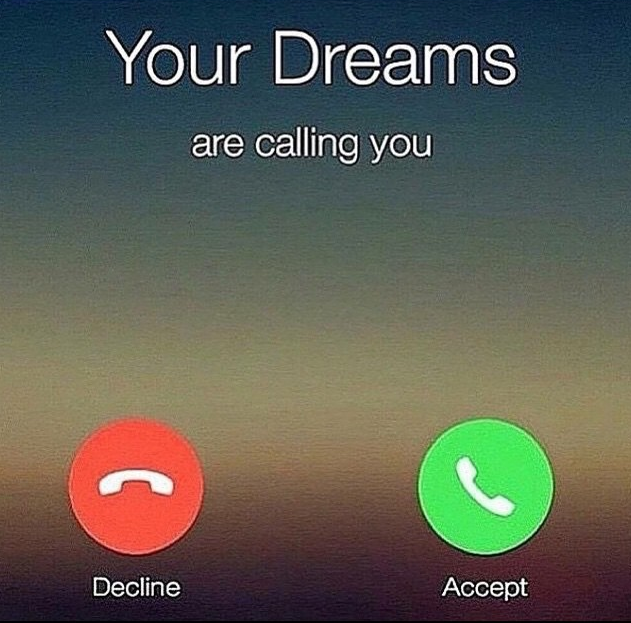
The freedom of managing your life is the most worthwhile thing
This is the single biggest takeaway that I can share with you.
I grew up believing that my work was just a means to an end; that I shouldn't expect to like my job or my work and that sitting at a desk doing uninspiring things for 40 hours a week was all I could ever hope for out of my life. This is such utter bullshit, you guys.
I've enjoyed a year of having the freedom to choose the work I want; to take an afternoon off to go shopping with a friend; to work on a Sunday or during the evening; to take a 3-week vacation to Central America and to work on the road.
I do what I want and am building my ideal life on my terms, and I get to grow something amazing and completely my own all from scratch. The work I do is fun and rewarding, and most importantly it makes my clients feel good, too.
Personal takeaways from 365+ days
I used to feel trapped by my life.
I didn't know what I wanted to do, where I wanted to go professionally, and I felt shackled to a corporate work and life that I resented and which, frankly, wasn't a good fit for me. It wasn't until I started building my client list and hanging out with other creatives and entrepreneurs that I realized that doing the thing that you love for a living is the key to being truly happy all the time.
The past 365+ days have been an exercise in un-learning a lot of things that I thought I knew about my value as a person and a creative professional. I've also learned so much about myself and have developed such a deep appreciation for my life that I can barely put it into words. It's been an exciting, challenging, and rewarding experience that I wouldn't trade for anything.
Thank you to my fantastic partner John, my incredible and supportive friends, and to my clients who do me the honour of working with me.
Alyson
How to Use Twitter to Create Connections & Grow Your Business
- by Alyson Shane
Earlier this week I got together for a mini-tweetup or sorts with some local ladies that I know through a Twitter chat that I participate in. We had some lunch, enjoyed some laughs, and got to know each other a little better.
That experience got me thinking about the value of Twitter as a social network, and how easy it can be for people to find each other, create connections, and even grow their businesses.
As many of you know, Twitter is my favourite social network and I believe that the community I found online helped shape me into who I am today.
With that in mind, I wanted to share some benefits that I believe Twitter can have for you and your business, so let's get started:
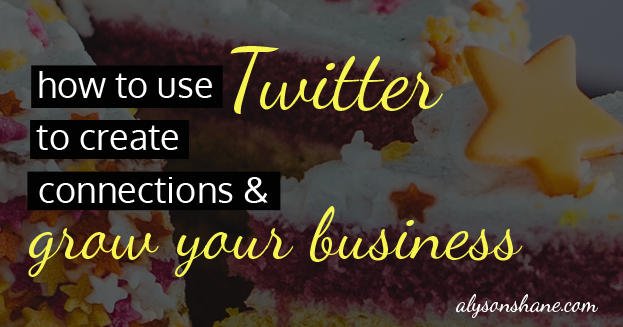
Interact with real people
One of the biggest objections I hear to Twitter is "I'll never meet real people! It's just brands and businesses!"
Not so, young social media Padawans. Not so.
One of my favourite stories to tell about social media was how I met my good friend Colin. I was pretty green to Twitter (circa 2009 or 2010) and I tweeted out something like "are there any meetups for creative types in #Winnipeg?" Colin tweeted at me, we proceeded to meet up at the next Secret Handshake meetup, and we've been friends ever since.
I talk about this a little bit more in my post How Social Media and Blogging Helped Me Discover Who I Am, but it's worth repeating here that Twitter is an excellent conversation tool because it democratizes your feed.
Currently Twitter's timeline is largely comprised of people you follow and you see their tweets in chronological order, allowing you to tweet at basically anyone you want, anytime. This means that you can connect with a celebrity, talk to a brand, or just reach out and start chatting with other people from your hometown, and you're all on the same playing field.
Create genuine, real-life connections
One of the secrets to using Twitter isn't to just tweet and expect people to find you. Sure, replying and RT'ing is a lovely way to let people know that you're out there, but finding twitter and participating in Twitter chats is one of the fastest ways to start seeing connections grow.
Essentially a Twitter chat is a chat hosted on Twitter which uses a chat-specific hashtag (this thing: #) to help users identify and respond to one another. Twitter chats tend to be grouped around themes or topics and can range from chats about beer, to parenting, to disability rights, and more!
One of my favourite weekly chats is #wecmchat, which is hosted by the Women's Enterprise Centre of Manitoba, and focuses on fostering discussion about business ownership and being a woman in business. I've met lots of local lady business owners in the year or so that I've been participating in the chat, and some of us even got together to grab lunch at a burger joint just outside the city:
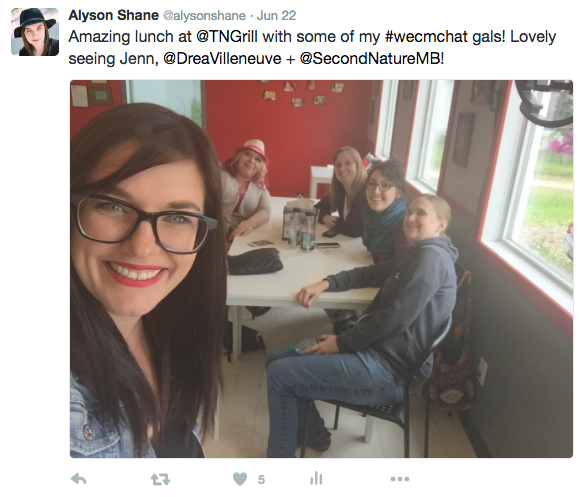
What's great about this chat is that I've met other like-minded people (my "tribe") and have formed connections with them that may not have existed otherwise, and gotten to know them in ways that I may not have if we'd only run into each other face-to-face.
This is the power of Twitter chats: to be able to get to know other people with similar interests, goals, and beliefs in informal and regularly scheduled times.
Grow your business
Twitter can absolutely convert those conversations to paying customers, but you have to put in the effort. Twitter doesn't have a quick ROI, so don't expect to go from 4 followers to 4,000 overnight unless you bought them from somewhere, which is a whole other topic in and of itself.
That being said, Twitter's power lies in its ability to let a business act like a human being. Unlike on Facebook, where business pages can't interact with personal profiles, businesses can Tweet to personal accounts. For example, if you tweet out "today is my birthday!" your local pizza place may tweet back "happy birthday @yournanehere!"
By engaging in conversation with other users businesses can use Twitter as a way to remind people that their business is there, and to create feelings of familiarity and trust as they engage in casual, positive, and non-salesy conversation.*
(*This is super important! While it's okay to tweet out about sales, special promos, and the like, it's bad Twitter etiquette to tweet anything prompting people to buy from you.)
While Twitter may have a slower ROI, it can absolutely land you clients. I can say this with absolute certainty because I've met clients who have followed me on Twitter and decided to use my services as a result. The more time you invest in talking to others and building connections on Twitter, the better your results will be.
More questions?
If you're still totally baffled by Twitter check out my Twitter Crash Course post series. I'll walk you through setting up an account, to connecting with your first followers, understanding your analytics and more!
Click here to view the project index
When it comes to any social network the most important thing to remember is this: everyone else is there to make connections, just like you. So jump right in and start tweeting!
Do you have any questions about Twitter? Tweet at me or ask me in the comments!
How to Pull Yourself Out of a Creative Slump
- by Alyson Shane
Let's face it: even those of us who run our own businesses doing what we love for a living there are days where we feel more lukewarm than red-hot about it. It's normal! Not every day has to result in bubbly feelings, 110% productivity, and heaps of creative new ideas to jot down.
But what do you do when that dip in productivity becomes a lull... and then the norm?
This totally happened to me recently.
Don't get me wrong: my dedication to my clients hadn't faded, but my creative side - the side that feels like it shows when I write, for example - seemed to be taking a backseat to everything else that was going on in my life.
This is totally normal. It's normal for creative people to go through a dip in productivity, or a drought, but when you depend on your creativity to make a living there's a unique sort of pressure to get yourself together and get producing again.
With that in mind I wanted to share some of the steps I've taken to "get my groove back" so to speak, because you never know when a creative dry spell may occur:

1. Acknowledge there's an issue
This is the worst. When you're in a creative slump it's easy to brush it off and say "I just don't feel like it right now!" or "I'll just get to it later" but you've got to be honest with yourself or you'll never snap out of it. You need to take a long, hard look at your screen (or canvas, or whatever) and admit: I haven't been working as hard at my craft as I usually do, and I need to snap out of it.
It's normal to feel guilty here; just let yourself feel bad for a few minutes... then let it go! The easiest way to make those guilty feelings go away is to do the thing that's making you feel bad, right?
2. Do it even if it sucks
The biggest hurdle to overcoming your creative slump is just sitting down to do the damn thing and not getting overwhelmed to the point where you're too in your head to produce anything of value. So what should you do instead? Sit down and create something of no value.
If you're a writer like me, do some free writing and experiment with different ideas, word combinations, and see what emerges; if you paint, just paint some stuff and let go of the expectation that it has to be your next masterpiece; you get the idea. Getting back into the habit of doing your craft will help you get back to feeling comfortable with it instead of intimidated and anxious.
3. Get active
When my anxiety flares up or I get super busy I'm the worst for letting my trips to the gym fall by the wayside. I try to go 2-3 times a week and I notice a definite slump in my mood, sleep, and creativity levels when I'm not exercising regularly. Recently I "scheduled" GAINZ time into my calendar Monday, Wednesday, and Friday mornings; that way it's just scheduled into my workday.
On days when I can't make it in the morning I try to go in the afternoon, but if all else fails I make a point to go for a walk, ride my bike somewhere, or do yoga at home (I'v also started doing this 10-minute yoga flow video in the afternoons to clear my head - it works, I swear!)
4. Read
Like I said, I've been struggling with a creative slump recently and when I sat down at my laptop today I hadn't intended to write blog post. I've been struggling to write consistently recently, but I still spend a lot of time online reading articles about a wide variety of topics because 1. I'm a voracious reader and 2. I have to in order to stay on top of my game professionally.
In any case, a few days ago John showed me a terrific series of posts on Derek Sivers' blog, one of which is called How to Be Useful to Others. One of the points goes as follows:
3. Share strong opinions.
Strong opinions are very useful to others.
Those who were undecided or ambivalent can just adopt your stance.
But those who disagree can solidify their stance by arguing against yours.
Even if you invent an opinion for the sole sake of argument, boldly sharing a strong opinion is very useful to others.
While it didn't really strike me at the time, those statements have been gnawing at me for a few days and were one of the things that inspired me to sit down and start trying to work past my writer's block. However, you can read whatever inspires you in order to get your spark back: novels, autobiographies of people you admire, or even some articles on Hacker News - whatever leaves you feeling inspred is stuff you should actively be seeking out and reading (or re-reading).
5. Write it out
Sometimes when I find myself struggling to put my thoughts to paper I do "free writing" session. Free writing is a technique where you literally just write whatever comes to mind without stopping to correct spelling, grammar, or focusing on a specific topic.
After reading the aforementioned Derek Sivers article I started typing... and oddly enough the bare bones for this post started to emerge. I wrote about feeling anxious about not writing as much, and as the words appeared on my screen I realized that I was stuck in a cycle of guilt over not creating which was actually stopping me from doing it.
I find this technique is especially helpful before I start writing something a bit more technical (like one of these blog posts) because it really clears out whatever's floating around in your head. Often whenever I find that I'm stuck on an idea or problem a little free writing clears out that mental clutter in no time!
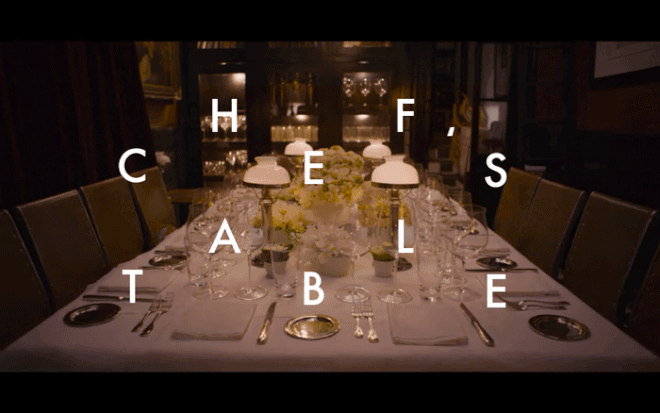
6. Watch & be inspired
I don't usually work with the TV on, but sometimes when I need a little creative background noise (like right now) I'll pop the TV on in the background and half-watch while I work on something. I find that it's best to put on something a bit soothing or slower-paced because watching stuff like action movies can be distracting (hint: don't try to focus on your craft while watching Deadpool).
One of my favourite shows is Chef's Table (it's available on Netflix - go binge-watch it when you're done reading this post!) because not only is it beautifully framed and shot, it also interviews highly creative people who have completely dedicated themselves to their craft and it's pretty impossible to not feel inspired while watching it.
Do you have any tips for getting that creative spark back? Tweet at me or tell me in the comments!
4 Tricky Social Media Challenges & How to Solve Them
- by Alyson Shane
Let's face it: social media is challenging, and most people feel totally overwhelmed when they first sign up for a social network without any prior knowledge of how to use it.
This is totally normal, but unfortunately it's the reason that many people sign up for social networks, spend a little bit of time trying to get to know them... and then promptly abandon them when they encounter a challenge (like getting new followers, or having authentic conversations) that they don't know how to overcome.
Stop the madness! While social media can certainly be complicated and feel challenging (trust me, I know) it's not rocket science, and with that in mind I wanted to cover four of the biggest, trickiest challenges that people ask me about on a regular basis.
Let’s jump in!
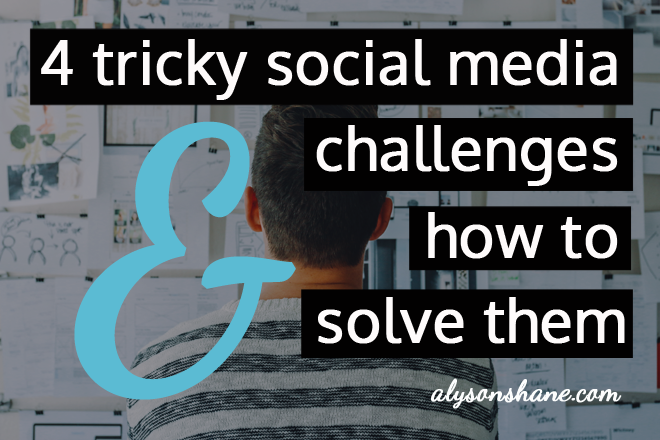
Challenge #1: Creating an authentic connection
One of the things that people seem to struggle with the most when it comes to interacting on social media is authentic interactions. An "authentic interaction" is when a person or brand takes the time to get to know their audience on a personal level by interacting with them in a natural, non-salesy way, and is an important part of building feelings or trust and familiarity online.
How to solve it
The easiest way to create an authentic connection online is to be legitimately interested in other people, and to engage with them in a variety of positive ways. These can include:
- Asking questions
- Sharing links to articles and blog posts
- Responding to posts, tweets and comments
- Offering advice or a solution to someone's problem
One of my favourite ways to engage with other people is to find relevant Twitter chats and participate regularly. Never participated in a Twitter chat? Don't worry, I have a whole series called the Twitter Crash Course to get you started.
Challenge #2: Developing a social media strategy
Most people are on social networks without much of a plan, but when you make the decision to start investing the time and energy into growing your audience, it's time to sit down and start planning how to do it.
How to solve it
There are lots of things that you can do to pave your path to social media success, but a few of the most basic ones you ought to have figured out before diving in are:
- Why you're on social media. Don't just say "because everyone else is"! Legitimately ask yourself why you want to invest your time growing an online audience and let those goals guide your actions.
- How you're going to achieve those goals. Maybe you'll put together a kickass paid advertising campaign, maybe you'll start sharing hilarious cat videos, whatever the case may be.
- How will you measure success? There are lots of ways you can measure success: number of page views, tweets, responds etc over a specific period of time, etc. What matters is that you keep records (I do mine on a monthly basis) to track your progress.

Challenge #3: Creating engaging, quality content
If you think that consistently coming up with good, consistent content for your social media feeds and blog is challenging and time-consuming... well, you're right. In fact, it's exactly why people like me exist: because most people simply don't have the time to create, update, curate, monitor, respond, and schedule content across multiple social media profiles.
But if you're not ready to invest in someone else handling your content for you, it can feel like an overwhelming amount of work, and is often something that leads to people avoiding or abandoning their social profiles entirely.
How to solve it
One of my favourite ways to suss out high-quality content ideas is to use a great tool called Buzzsumo, which allows you to punch in topics or websites and see the most popular posts about those topics. You can also try finding relevant Twitter chats and paying attention to what people discussing your industry or products are asking, or searching forum websites for questions and discussion threads.
When posting articles, make sure to use eye-catching images whenever possible; if you're sharing a link an image from the page will usually auto-generate (it's usually fine to just use these instead of your own), but if you're posting links to your own blog posts and content, take the time to create a unique and original image to go along with it.
Challenge #4: Getting the word out about your content
Unfortunately setting up a blog and social feeds doesn't necessarily mean that people will immediately flock to you (I wish it were that easy!) - you'll have to hustle your content in order for people to know that it's there. No matter how great your content may be, if you aren't promoting it then nobody is likely to find it.
How to solve it
The trick to getting your content out there is to be proactive in sharing it and encouraging other people to share it, as well. Try and identify people who would benefit from seeing your content and make a point to share it with them. There are a few ways that you can accomplish this:
- Share your blog or website updates on social media.
- Reach out to influencers in your industry (in a nice, non-sleazy way) and ask them to share it or work with you to promote your content.
- Tag people you mention in your post. For example, last year I wrote a post about the Winnipeg Folk Festival and tagged them in the tweet, which they retweeted and subsequently earned me a lot of traffic.
- Post links to your content on relevant Facebook or LinkedIn groups, Pinterest groups, and forum websites like Reddit and HackerNews (be sure to mind the posting rules on these sites!)
- Repost your content on Medium.com, and reach out to publications to see if they would be interested in republishing your work.
There you have it! Four steps to social media success and overcoming some of the trickiest obstacles that people face when they first start wading out into the big, wide world of social networks.
Do you have any social media challenges you struggle to deal with, or tips for overcoming some of these tricky issues? Tell me in the comments or tweet at me!
How Social Media & Blogging Helped Me Discover Who I Am
- by Alyson Shane
**Trigger warning** For some of you who come from abusive relationships, some of the content in this post may act as a trigger. Please read responsibly.
The other day Meg Athavale of LUMO shared a terrific article on Facebook called "The Psychological Price of Entrepreneurship" and one of the sections of the article really stood out for me:
Rather than showing vulnerability, business leaders have practiced what social psychiatrists call impression management--also known as "fake it till you make it."
This really struck a chord with me because as someone who makes their living online, keeping my personal brand as authentic as possible is one of my biggest priorities. Sure, I may not blog or tweet about every tough therapy session or anxiety that pops up, but as a business owner with an audience I believe that I have a responsibility to be transparent about the challenges in my life as well as my successes. I am a human being, after all.
With that in mind, I wanted to discuss the struggle that I've faced with reconciling my "authentic self" (aka, the one you see here, on social media, and in person) with the person that I was raised to believe that I was.
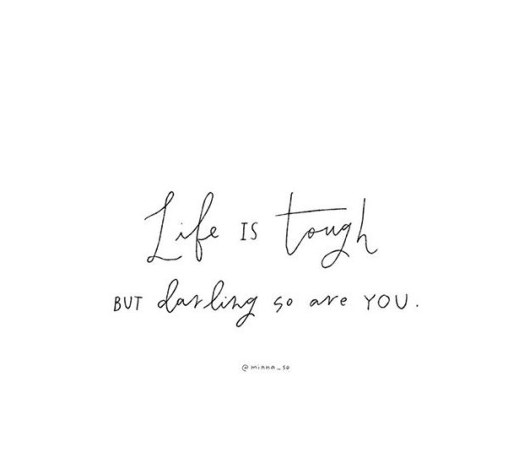
Some backstory
For those of you who don't know me personally, I haven't spoken to my parents or the majority of my family since early 2015 (you can read more about that here). Recently my brother had a baby, and I had to make the decision to not reach out or be involved. This wasn't a decision that I made lightly, but it was the right one for me and my mental health, and I stand by it.
This decision prompted my mother to leave a comment on my blog. Some of her statements (minus the attempts at gaslighting) included:
- For some reason Alyson, which I have to confess, escapes me, you seem to be under the impression that you are far superior to the rest of us.
- Maybe because you are a, 'writer', and can use, 'big', words, you think it gives you an advantage that we don't have.
- I think you need to get down off that pedestal you've erected for yourself and get rid of your overblown ego.
- You are so focused on living up to your superficial, 'queen of the Internet', alter ego, that you no longer know how to be a decent human being.
- Could it be that there is a wee bit of human in you after all?
The reason that I'm sharing these personal details is because I don't believe that vague descriptions adequately convey the narrative I grew up with. The comments you see above (which thankfully aren't a part of my life anymore beyond being a very helpful example for the sake of this article) were the things that were told to me on a daily basis.
Needless to say I entered adulthood as a pretty unhappy, insecure, and confused individual.
Discovering myself online
When I first started blogging back in 2003 I couldn't have predicted the multitude of ways that it would eventually come to change my life. I've always gravitated towards writing as my favourite form of self-expression, and blogging has always seemed like a natural and easy way to do it.
My blog is a reflection of who I am and the things that I feel are valuable and important to share, and from day one it caused issues between myself and my family. As illustrated in my mother's comments above, my ability to articulate and share my thoughts, and my willingness to do so, was seen as attempts at being superior and were frequently thwarted with threats of getting "cut out" of the family.
Despite this resistance from my home life I soon realized that I had found a community of like-minded individuals who wrote, shared, and published with the same authenticity that I wanted to be doing. In the late 2000's I started reading Raymi the Minx, the busblog, oceanaria, and a plethora of now-defunct but wonderful blogs who inspired me to be myself, no matter what. I'd always grown up believing that "nobody cared" about my thoughts or feelings, and the blogging community taught me that it wasn't true.
Around 2009 I also began discovering social networks. In particular I gravitated towards Twitter, which helped me express myself and connect with people whom I likely wouldn't have met otherwise. I doubt that I would have met Stef, Colin, Adrian, LJT, Kevin, and a variety of other wonderful people whom I now count among my dearest friends if it hadn't been for Twitter, and being active on this social network helped me expand my reach and connect with colleagues, clients, and a support system that I had never imagined was possible.
Around 2011 my active presence online as well as my obsession with internet culture and memes led to some of my Twitter followers (jokingly) dubbing me the "Queen of the Internet". As odd as it sounds, this nickname, however in jest, helped me start to develop a confidence that I had never experienced before. Suddenly people were turning to me to ask questions about social media and blogging on a regular basis. I started speaking at Red River College's Creative Communications program, at the MBlog conference, and my work was published in the local paper.
Contrasting these successes against the person that I had always believed myself to be (the selfish, superficial person who didn't care about anyone but herself) became harder and harder. Not only were my friends, colleagues, and peers informing a narrative which challenged my previous thoughts and feelings about myself, but I was starting to slowly stop believing those things, as well.
The catalyst
In retrospect the biggest change in perspective came when I published my post Living with the Mean Reds, which detailed how it felt to live with anxiety and feelings of low self-worth every day. At the time I was terrified of hitting "publish", and I was overwhelmed and surprised at the outpouring of support and kind words that I received as a result.
Social media and blogging provided me with a supportive community where over time I was able to learn to shed the negative self-image that I'd grown up believing. By having a space that was completely free from my family's influence I was able to start growing, learning, and not being so afraid all the damn time. I started a business, I started therapy, and I started investing my time and energy into the things that really mattered instead of indulging in drama because I felt obligated to participate
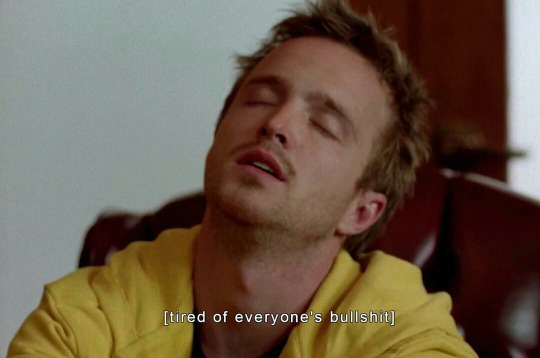
Support from these communities help me finally realize that refusing to make room for the negative things in my life doesn't make me a bad person. It means I have a deep enough understanding of my needs to make hard (and sometimes unpopular) decisions.
Why does this matter?
Social media and blogging are extremely powerful tools which can connect us with people all over the world. They allow us to find communities and support systems online we can start to explore parts of ourselves that scare us, or that we don't feel we can express to the people in our day-to-day lives.
By finding ways to express myself online I was able to discover things about myself, make connections, and find opportunities that simply wouldn't have been available to me otherwise. The encouragement I received from my followers, readers, friends, and my very supportive partner led me to where I am today, and though I'm not perfect I'm working hard at building the life I want and deserve.
Sharing this stuff isn't easy. It's doesn't feel great to admit that my mother is the way that she is, or that my family doesn't understand who I am, but it's the reality that I'm in and I'm thankful to be able to have a platform through which I can share these thoughts and experiences as I work through them.
Through blogging and on social media I was able to find a place for myself and connect with communities of supportive and like-minded individuals who helped me start making a place for myself in the real world and, most importantly, in my own eyes.
Most of the bloggers I've followed over the years don't know how much they helped me, and there's a good chance that if my words help someone that I may never know, either. But if reading about the challenges that I've faced helps someone else seek out the supports they need to start healing and being happy, then that matters a great deal, and I'm happy to share my stories and be a part of that process and thankful to be able to help.
As always, thanks for reading, and thanks for being here with me while I figure this stuff out.
(If anything I've described in this post re: family expectations, relationships, or narratives imposed upon you by your family sounds familiar, I strongly encourage you to check out /r/raisedbynarcissists, a wonderfully supportive Reddit community that has helped me a lot.)
6 Ways Your Small Business Can Save Money
- by Alyson Shane
Recently I received a phone call from my alma mater asking for donations to their Faculty of Arts, where I studied when I received my BA. She asked me for $5 a month, or "the cost of a single Starbucks coffee" (well played, University of Winnipeg, well played).
I'll be honest with you: I declined to give back to the university for the time being. My business is still in it's infancy, and saving money is pretty important to me right now. However, this conversation got me thinking about the ways I work to keep costs low for myself during this stage (even if that means saving that $5 a month), and I thought I'd share some of the things I've learned:

One of the most interesting assumptions that people have started to make about me since I began running my business is that this is the lifestyle I lead:

This is, much to my chagrin, not how I live my life. In fact, it's a little more like this:

Don't get me wrong, I'm doing just fine financially, but I'm not baller status quite yet. As a result, here are some of the areas where I cut costs or try not to indulge in order to keep my business expenses low:
Buying or renting space you don't need yet
One of the easiest ways to save a few hundred dollars a month (minimum!) is to avoid buying a brick-and-mortar store or renting office space for as long as you can. This, in my opinion, is the single biggest benefit to working from home.
Sure, there are benefits to an office or renting a desk in a co-working space, such as access to a board room, printing area, etc, but unless your business has grown to the point where you need those things on a consistent basis, having client meetings in coffee shops should be fine for now.
Spending on expedited shipping
Unless it's a business emergency (ie: your business will shut down without this parcel/package) you can wait the extra day or two.
Additionally, if the shipping charges for a particular item are outrageous, ask yourself: do you really need that beautiful embossed day planner that badly? Odds are, you probably don't.
Custom website design
I get it: you want to build a website that stands out from your competitor's. You want something that is completely yours, and is an accurate online representation of your business and your values.
However, what's more important is simply having a website, rather than worrying about whether or not it's built custom from scratch. Many people choose to work with existing Wordpress or Squarespace templates, which are easy to alter and personalize without the investment in a custom designed site.
Unnecessary advertising
I'm a firm believer that the best thing a person or business can do for themselves is to start to build a positive reputation for themselves online. What's great about this is that social networks like Facebook, Twitter, LinkedIn and Pinterest (the biggest and most popular ones for businesses) are all free to join.
This means that if you do hustle a little bit (or hire someone like me #ShamelessPlug) you can start to build a name for yourself and your services without having to invest in paid advertising just yet.
Not only does putting off doing paid advertising beneficial because it keeps costs low, but people will appreciate that you're connecting with them on a real, human level, and not just sending a barrage of ads their way.
Office supplies you don't need
Confession: I LOVE going to stationery stores. Every time I step into Tiny Feast here in Winnipeg my heart starts going pitter-pat and I start imagining how charming my desk would be with all those fountain pens, notebooks, staplers... you get the drift.
As much as I would love to take everything from Tiny Feast home with me, I have to ask myself: how often do I use a stapler (never), how often do I use paperclips (also never), do I really need a handmade mug to store my pens (not at all)... you get my drift.
As tempting as it may seem to try and pimp out your desk with heaps of Pinterest-worthy goodies, resist the temptation for now. You can always indulge in that gorgeous cork-top desk in the future.
Subscriptions for software you don't need
This one always gets me. I pay for a few subscriptions to various content scheduling and monitoring services (HootSuite, Buffer, etc) and it sucks to pay the monthly fees... but without them I would go absolutely bonkers and not be able to manage my shit. So, for me they are a necessary evil.
However, unless you're in the digital marketing business odds are you can avoid a lot of these monthly expenses by using free software to do what you need. Some great options are:
- Insightly (CRM system)
- Freshbooks (accounting)
- HootSuite or Buffer (free versions - social media management)
- Toggl (time management - I'd be lost without this tool)
- Trello (project management)
- Dropbox (file sharing)
It may seem tempting to invest in expensive software, or to buy a bunch pf products up-front "just in case" but if you aren't using the tool on a daily basis, and if it isn't something that your business can live without (eg: I would be utterly lost without Buffer, for example) then consider sticking with the free version, or finding a free alternative until the time comes when you either a) need the service enough that you should pay for it or b) you can afford to invest in it.
Do you have any money-saving tips for small businesses? Is there something that you wish you had learned when you were starting out? Tweet at me or tell me in the comments!
